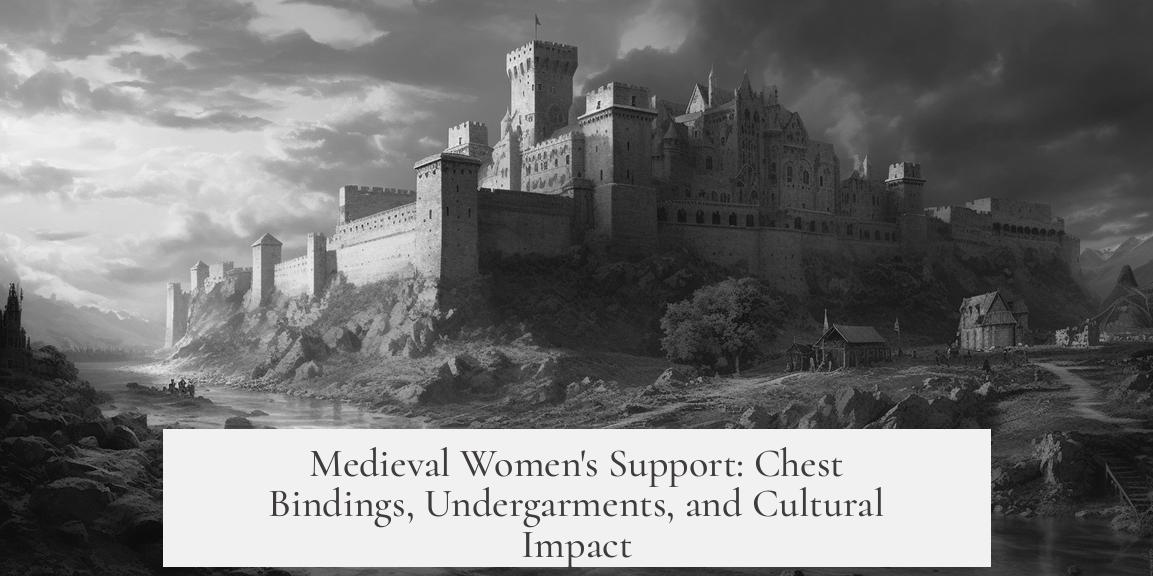Medieval women did not wear bras as we know them today. Instead, they used various methods and garments to shape and support their breasts throughout the Middle Ages.
In the early Middle Ages, European women wore loose, large-cut clothes without any openings or fastenings, providing no support or shaping to the chest. These garments simply draped over the body, leaving the breasts without structured support.
By the 12th century, evidence appears of women actively shaping and supporting their busts through chest binding. Women used breast-bands made of cloth to prevent overly large, shapeless, or flabby breasts. Gilbert of Hoyland, writing in this period, describes how women “constrain overgrown and flabby breasts with breast-bands,” showing an early form of compression or binding designed for a more contained appearance.
These breast-bands were simple bands or squares of cloth wrapped around the chest. Archaeological evidence for these is scarce because the materials rarely survived. However, written sources confirm their use. This chest binding technique can be viewed as a precursor to more structured garments that emerged later.
In the 14th century, clothing evolved with the introduction of more tailored and fitted undergarments. Women wore chemises or shifts with inserted breast-shaped bags or pads to support and shape the breasts. Henri de Mondeville describes women placing two tight-fitting bags in their chemises each morning and compressing them with bands. This method combined support and shaping more effectively than earlier bands.
Another 14th-century method involved compressing the breasts with tight tunics and lacing, such as among women of Montpellier, who used close-fitting overgarments tightened with laces to provide lift and shape. These fittings required advanced sewing skills to avoid discomfort or injury.
A remarkable archaeological find called the Lengberg bra, dated to the 15th century, reflects these innovations. This linen garment has breast-sized pockets and side lacing, offering both support and shaping. It combined the concept of breast “bags” with compression, resembling early forms of bras. This piece is a key example of medieval bust support prior to modern bras.
Alongside these undergarments, some women wore tightly fitted gowns or kirtles that acted as supportive bodices. Textile historian Robin Netherton notes that kirtles or undergowns could be cut so closely to the body that the bodice itself provided breast support. These gowns often featured sewn shaping to hold and lift the bust subtly.
In the late Middle Ages (15th century), artistic and textual evidence shows aristocratic women wearing kirtles stiffened for additional support and a smooth front. Materials for stiffening included coarse linen interlining, canvas, buckram, and pasteboard. For example, Henry VII’s court issued kirtles with extra linen underlayers to enhance shaping, a form of structural reinforcement.
Despite these developments, the use of boning and separate corsets under gowns only appears in archival records around the mid-16th century, long after the medieval period ended. Corsets as distinct, boned garments emerged close to the end of the Renaissance, distinguishing them from medieval practices.
| Period | Support Method | Details |
|---|---|---|
| Early Middle Ages | Loose garments | Large-cut clothing without openings or fastenings; no support |
| 12th Century | Chest binding | Breast-bands to constrain flabby breasts, simple cloth wraps |
| 14th Century | Tailored undergarments | Breast-shaped bags in chemises, compression with tight laces or tunics |
| 15th Century | Lengberg bra & stiffened kirtles | Shaped linen bras with lacing; stiffened kirtles with layers of linen, canvas |
| Late 16th Century | Boned corsets | Separate boned corsets emerge post-Middle Ages |
These phases show a progression from no breast support to rudimentary binding, followed by shaping bags and fitted garments, culminating in stiffened kirtles before the corset era.
- Early medieval women wore loose, unsupported clothing.
- 12th-century women used breast-bands for binding and shaping.
- 14th-century undergarments included shaped breast bags and tight tunics with lacing.
- The 15th-century Lengberg find reveals early bra-like garments with pockets and lacing.
- Tight-fitting, stiffened kirtles provided bodice support toward the late medieval period.
- Boned corsets and separate support garments appear only in the mid to late 16th century.
As They Didn’t Have Bras, What Did Medieval Women Use for Support?
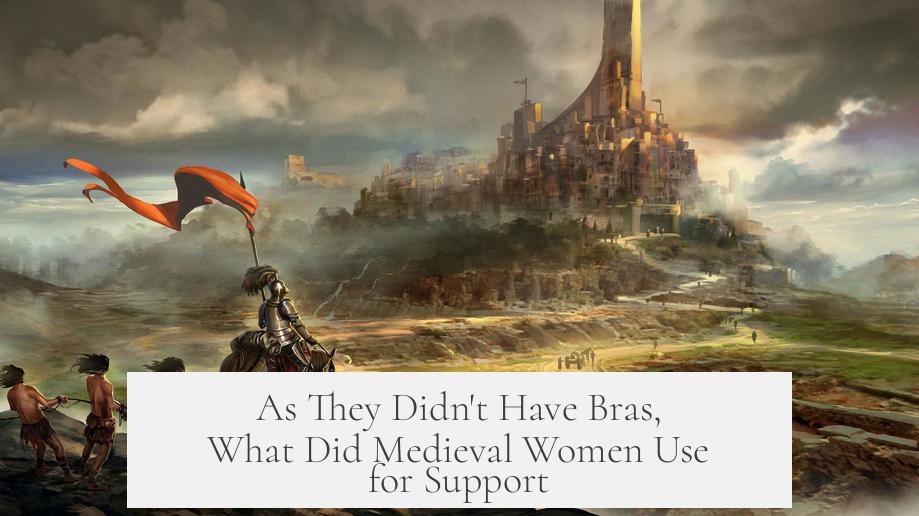
Medieval women didn’t wear bras as we know them today. Instead, they relied on various creative methods like chest binding, tailored undergarments, and fitted gowns to support and shape their bosoms. It’s a fascinating journey through history, showing how necessity and fashion led to clever solutions long before the bra’s invention.
Imagine living in the Early Middle Ages: women wore loose, large-cut garments with no fastenings or openings. Think of huge, shapeless tunics slipping easily over the head. There was nothing to hold or support the breasts. No bras, no tight corsets — just loose dresses that barely contained anything.
This lack of structure wasn’t just a fashion choice—it reflected social norms and the available textile technology. Fabrics were heavier and less stretchy, and sewing was more basic. Women’s clothing focused on coverage and simplicity rather than shaping.
Enter the Chest Binding of the 12th Century
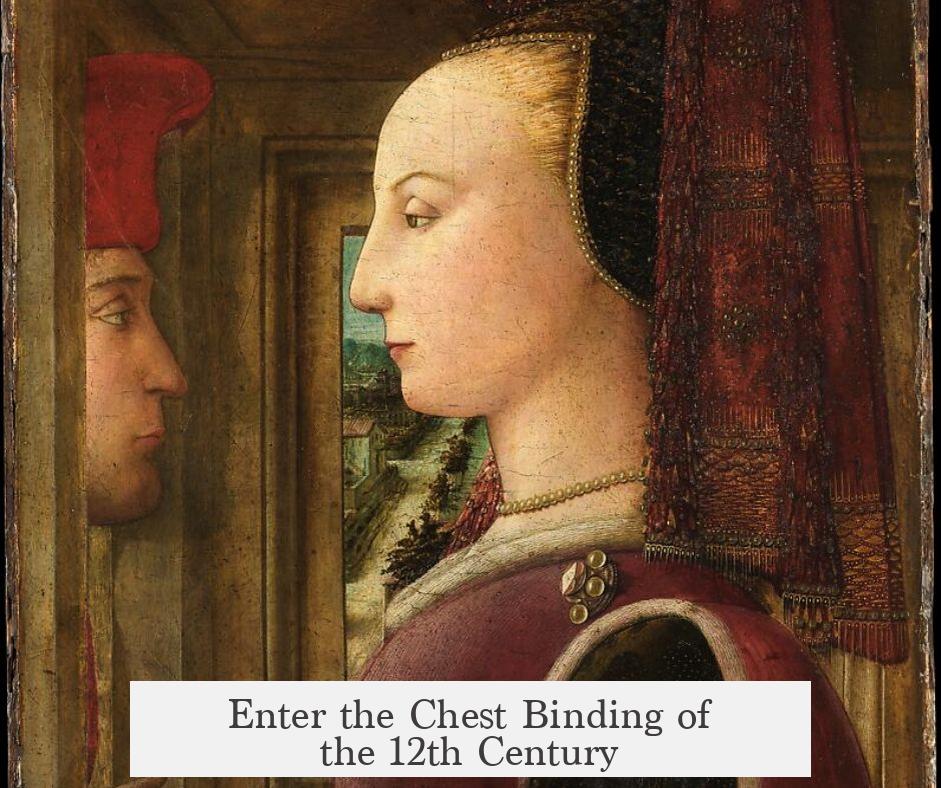
By the 1100s, something shifted. Women, or rather the culture around them, started using breast-bands or bands of cloth wrapped around the chest. Gilbert of Hoyland, a medieval writer, explicitly notes women binding their breasts to avoid a flabby or shapeless look:
“Therefore they constrain overgrown and flabby breasts with breast-bands, artfully remedying the shortcomings of nature.”
These breast-bands acted like primitive support—imagine a long scarf wrapped tightly under and around the chest to hold everything in place.
Unfortunately, actual textile evidence is scarce because such bands were plain cloth and simply didn’t survive for centuries. It’s like trying to find ghost footprints. Still, texts confirm their use and importance.
The 14th Century Sees Tailored Undergarments and Breast Bags
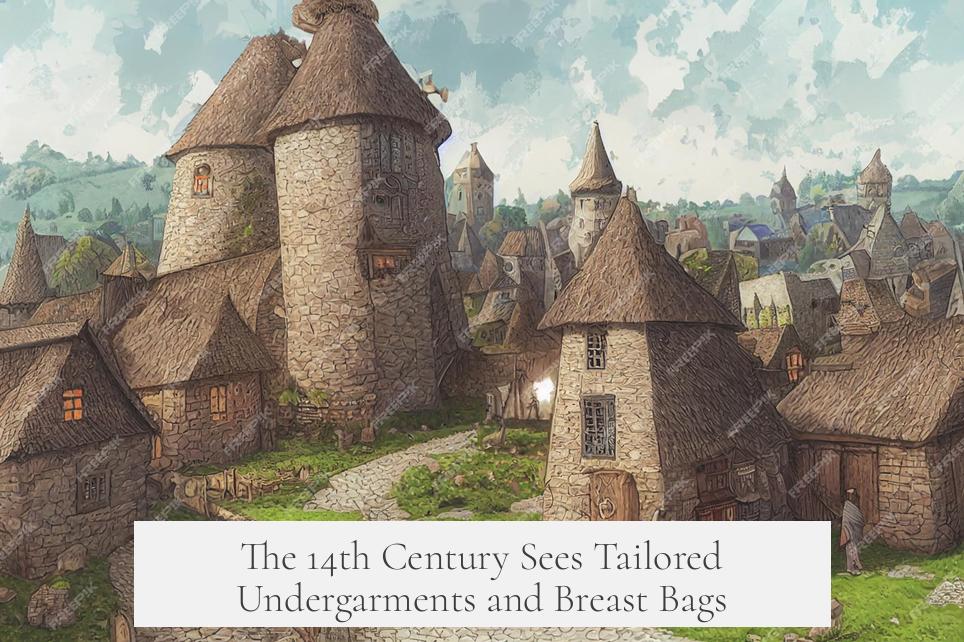
Fast forward a couple of centuries. Women began wearing tailored undergarments with fastenings like buttons or laces. These weren’t the shapeless robes of old but close-fitting chemises with special “breast bags” sewn inside.
The French surgeon Henri de Mondeville describes women inserting two tight-fitting bags into their underdresses every morning, compressing the breasts with matching bands:
“Some women … insert two bags in their chemises, adjusted to the breasts, fitting tight, and they put them into them every morning and compress them as much as possible with a matching band.”
Others, like the women in Montpellier, simply compressed their breasts with tight tunics and laces. This shows regional variations and evolving fashion styles.
One spectacular archeological find, the Lengberg bra, perfectly illustrates this transitional phase. Discovered in a 15th-century castle, it had breast-sized pockets and lacing on the sides—almost like a bra combined with a compression garment. It proves women worked to achieve both support and shape centuries before modern bras.
Bodices and Kirtles: Clothing with Built-In Support
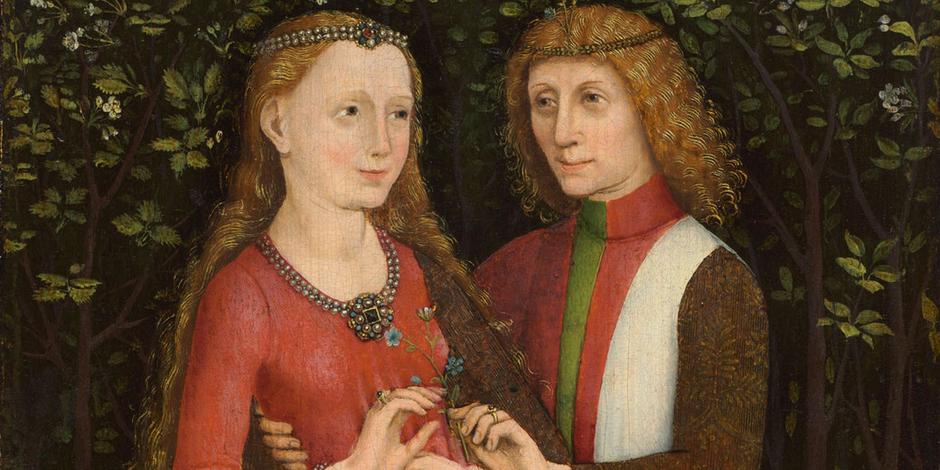
Besides undergarments, outer clothing also began supporting the body. Textile historian Robin Netherton speculates that gowns or undergowns—called kirtles—were cut tightly enough to function as support on their own:
“Some … speculate that women also began to wear a gown or undergown (or rather, a gown that could be worn with an overlayer, called a ‘kirtle’) that was cut to fit so closely that the bodice itself would be supportive.”
Imagine a sewing technique tuned to body curves rather than loose drapes. When you pulled on your gown, the tight bodice hugged the chest, providing a basic framework of support.
Stiffened Kirtles of the Late Middle Ages
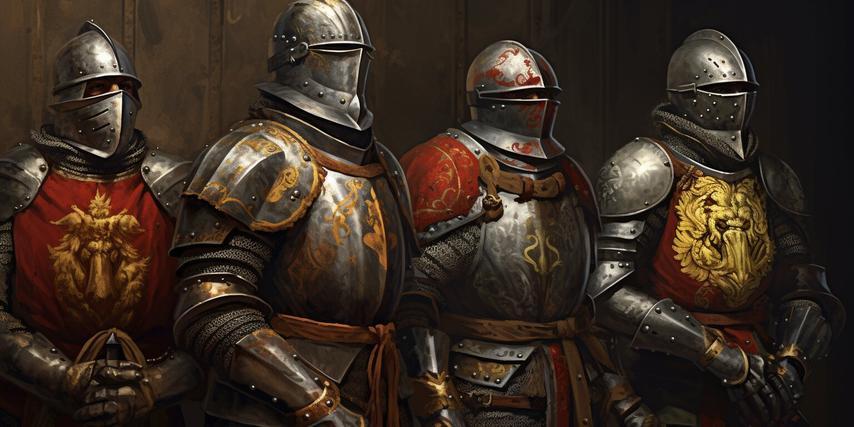
By the late 1400s, aristocratic women wore stiffened kirtles for extra structure and a smooth silhouette. Artistic depictions from Henry VII’s court show bodices stiffened with coarse linen, canvas, buckram, or pasteboard—materials that added firmness.
These kirtles acted like early shapewear, smoothing out lines and supporting the upper body. Still, they were nothing like the boned corsets that came hundreds of years later.
It’s worth noting that actual boning—thin strips of wood, bone, or metal—doesn’t appear in records until the 16th century. Separate corsets that we picture today emerge close to the end of that century, well beyond medieval times.
Practical Tips from Medieval Methods
- If you want a historical twist on modern support, try layering a fitted underdress with compression bands.
- Materials matter: medieval stiffening came from natural sources like coarse linen, so if you’re sewing costumes, linen interlinings make an authentic choice.
- Skillful wrapping was vital—wrong binding could hurt or restrict breathing. That’s a reminder that support needs to balance comfort and function.
- Close-fitting bodices that rely on good tailoring can replace complicated undergarments in costume design.
Why Does This Matter Today?
Understanding medieval women’s support methods sheds light on how women’s fashion evolved. It challenges the assumption that bras have always existed, highlighting centuries of innovation and adaptation before the modern bra debuted.
Plus, it invites curiosity. How did women without modern textiles manage posture and comfort? What does this mean for marketers, historians, or reenactors? The creative solutions of the past inspire us today to think outside the box—whether it’s about support, style, or sustainability.
Next time you put on a bra, consider this: Medieval women mastered chest bands, breast bags, and tightly tailored gowns to shape and support their bodies. Perhaps they even joked among themselves about the challenges of their “fashion bras” long before wires and elastics showed up to steal the spotlight!

